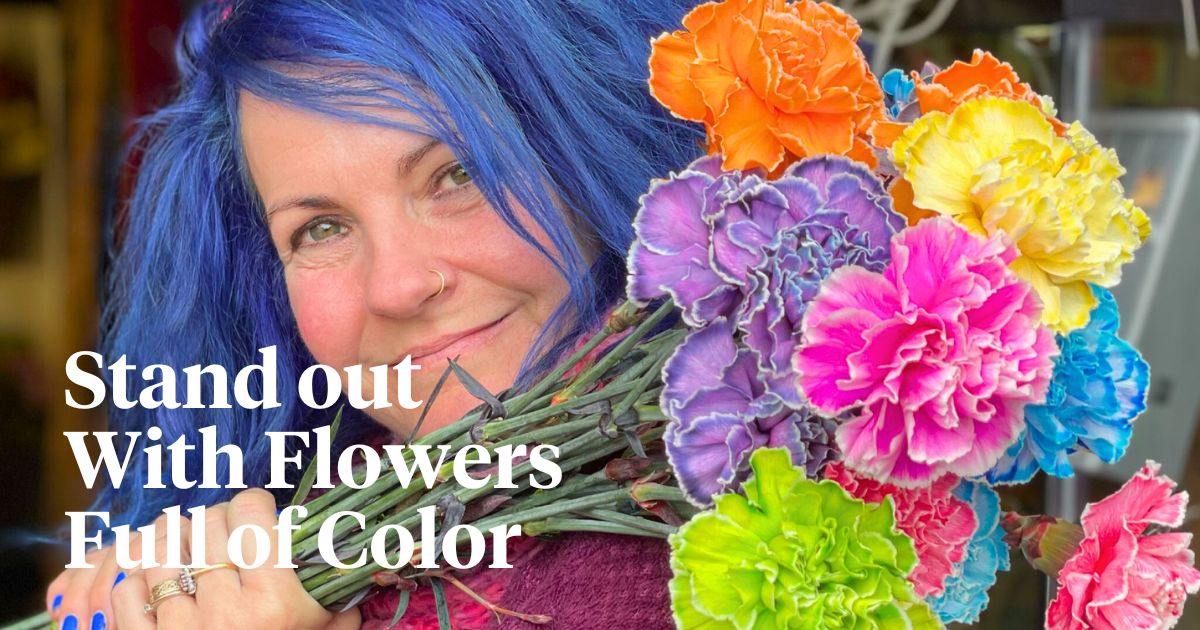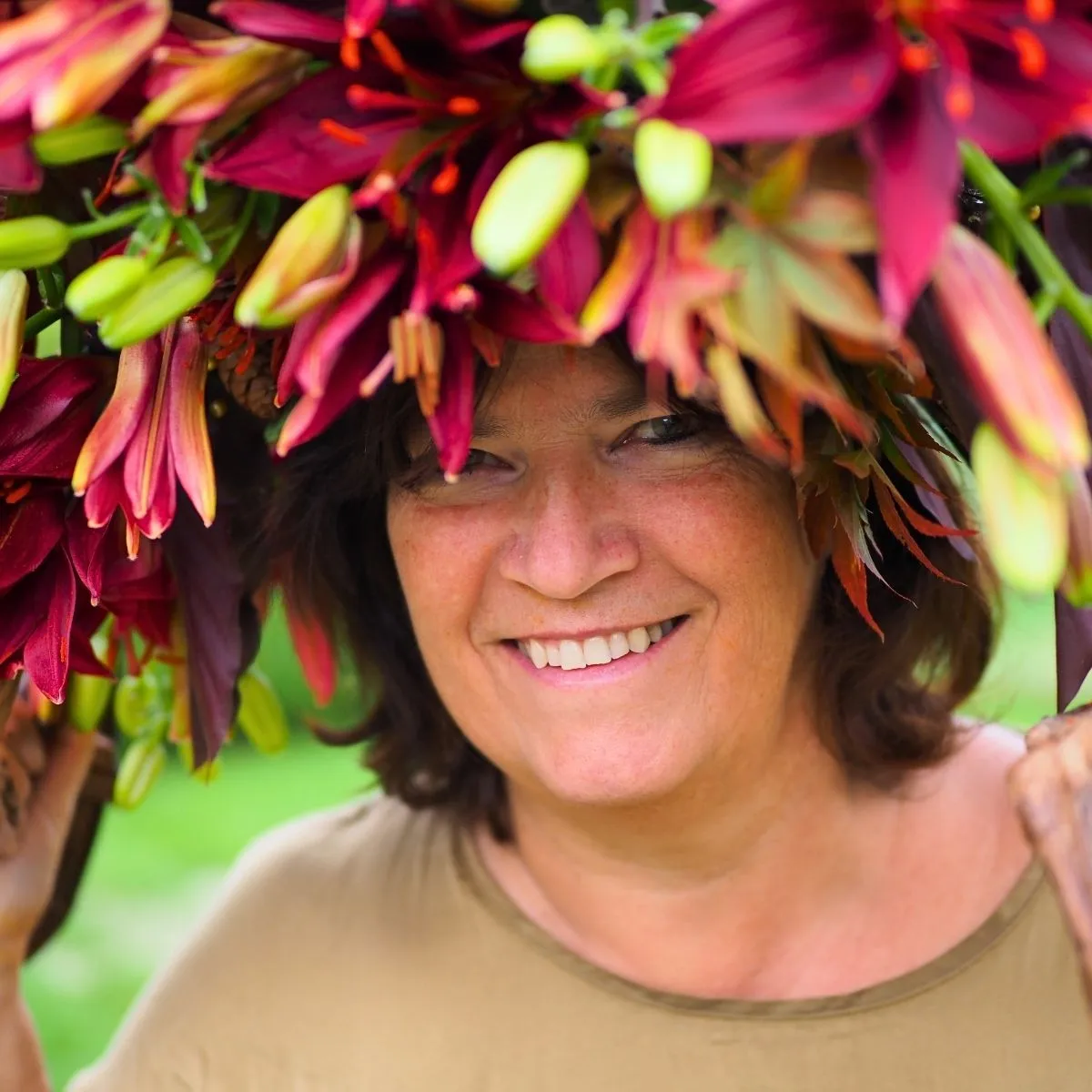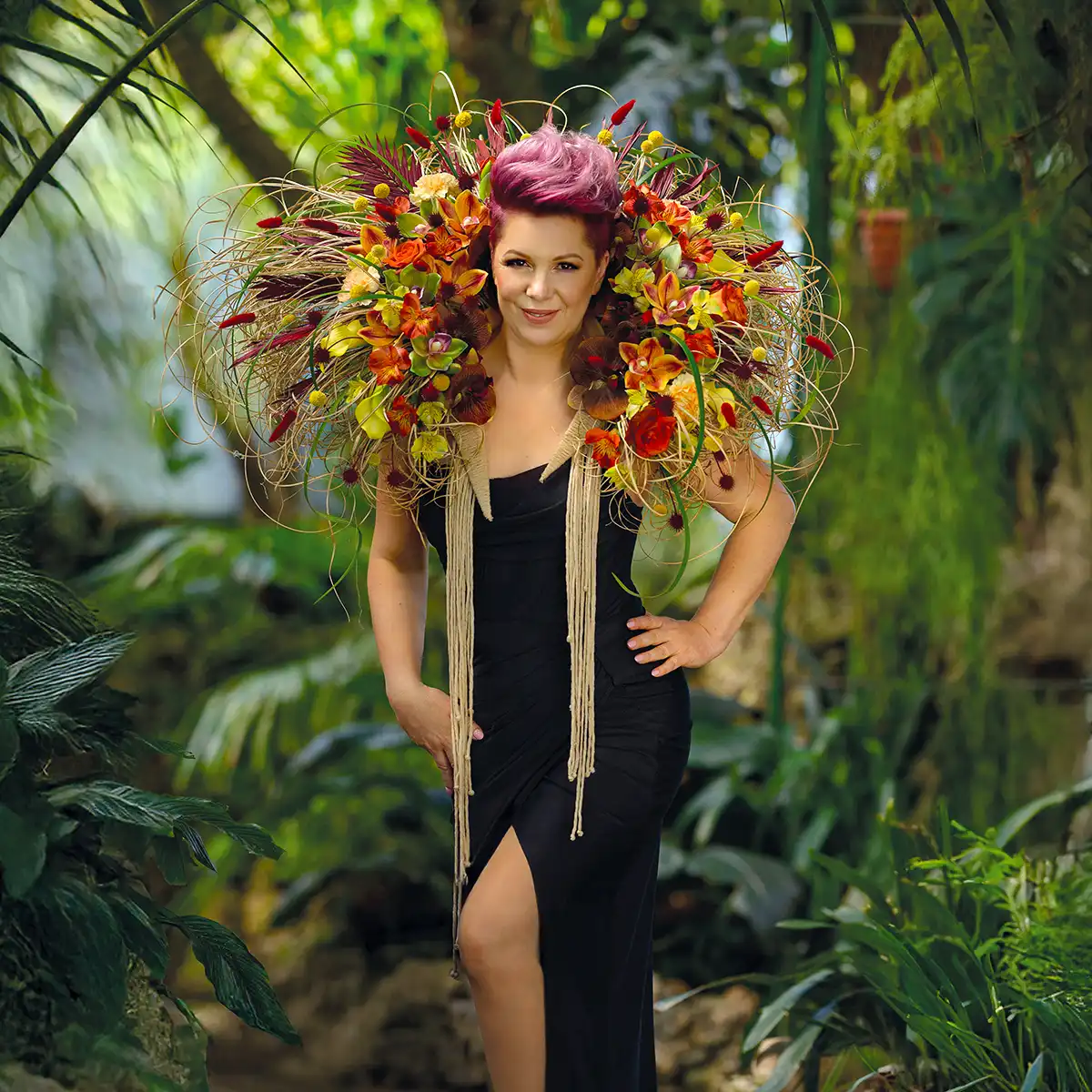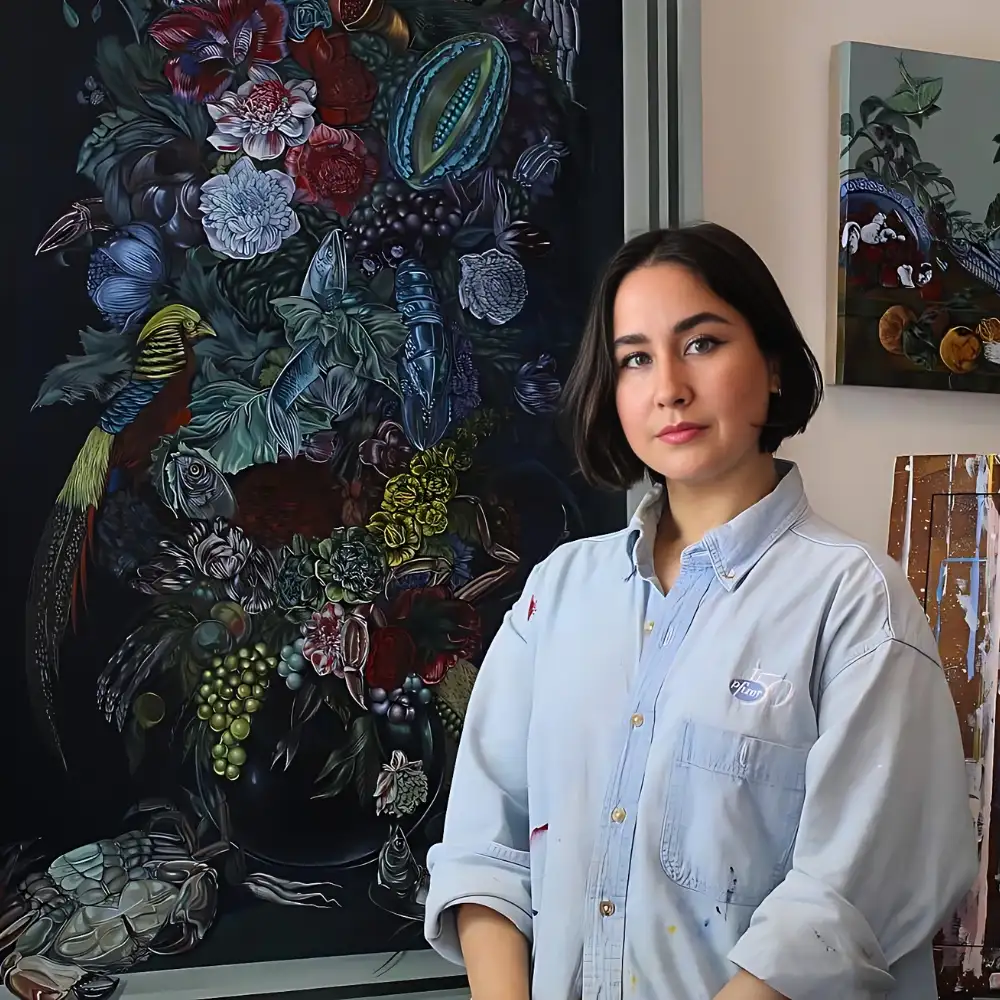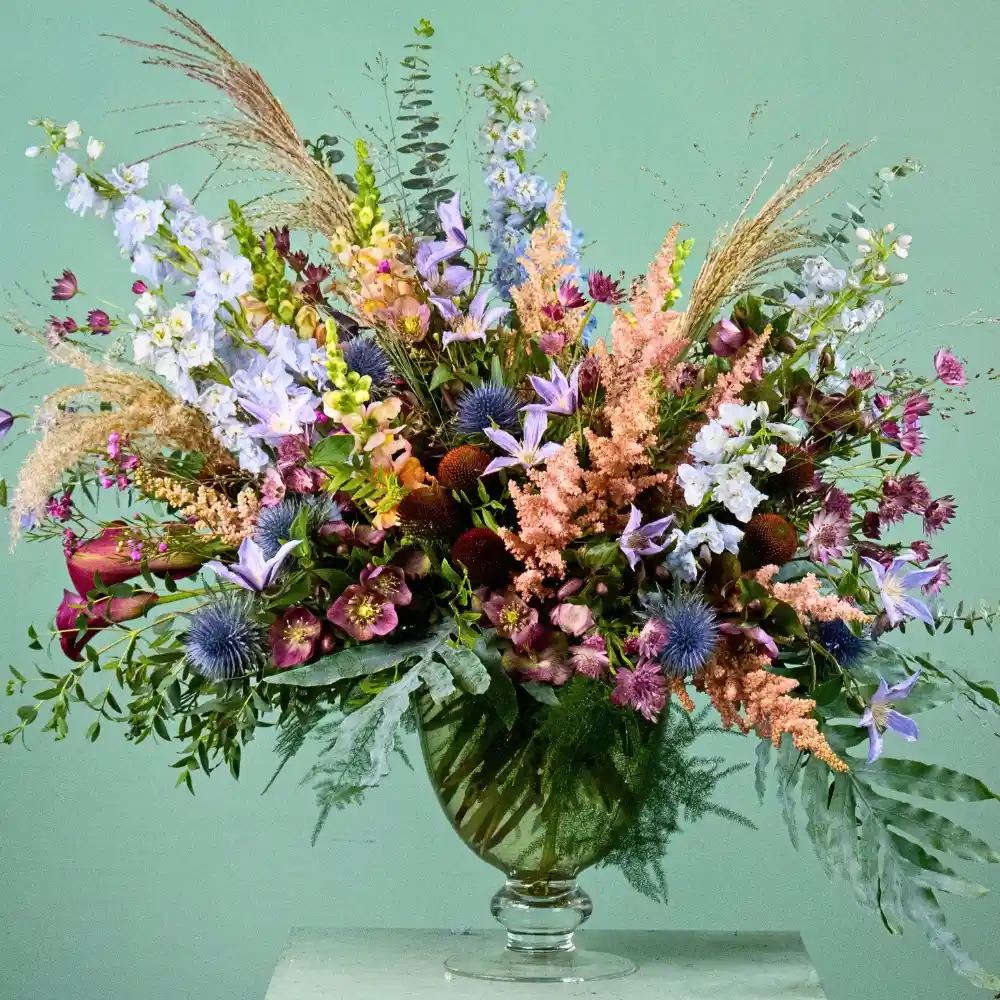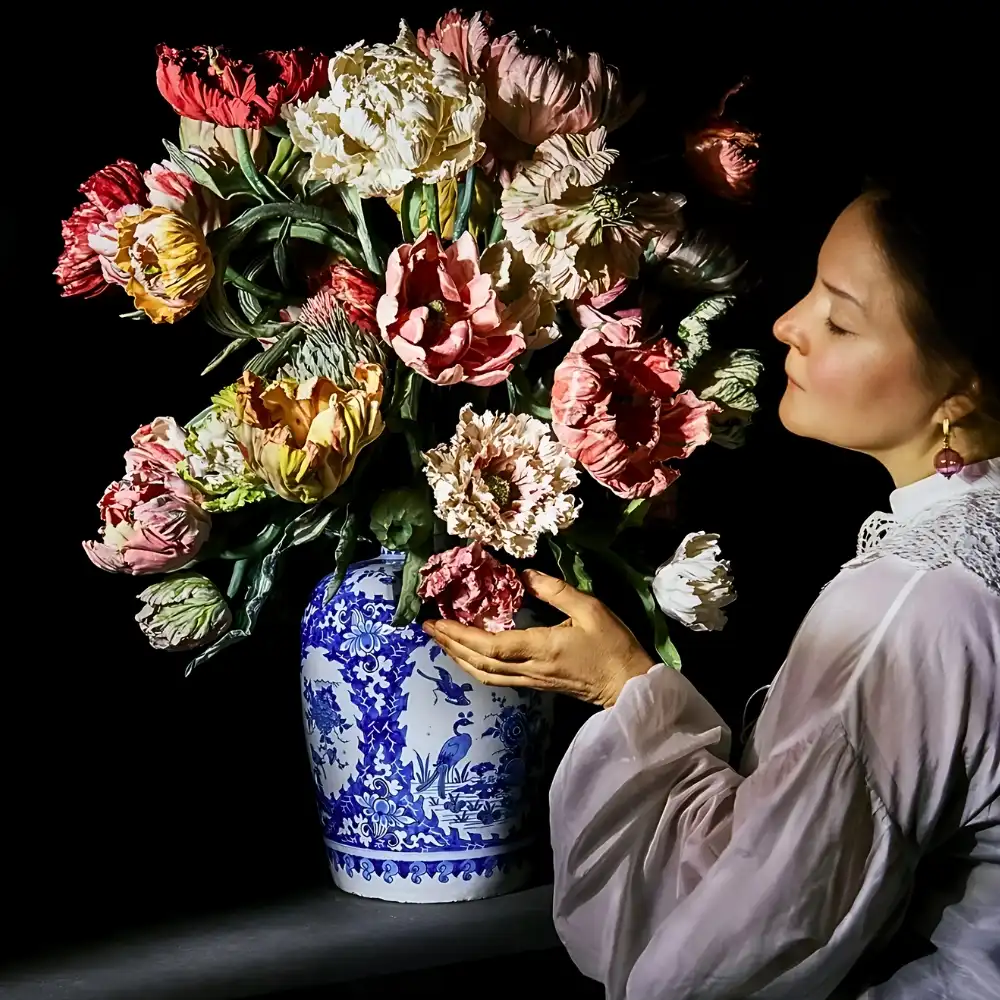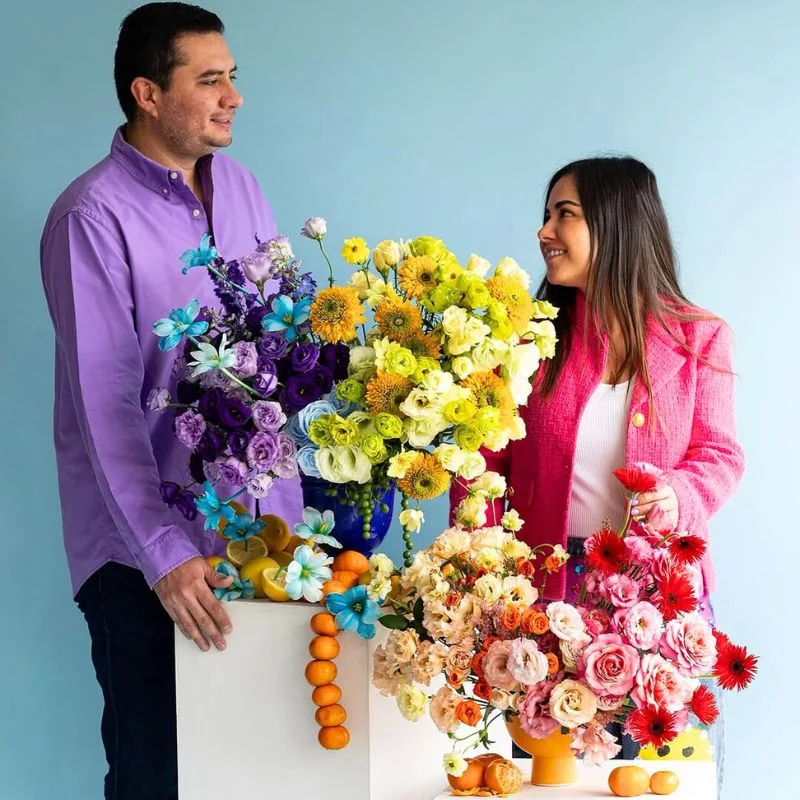Have you ever wanted to create breathtaking, unique floral arrangements that reflect your personal style? Or perhaps, just having uniquely colored blooms creatively adorn your floral compositions or designs, and making them stand out from others.
Well, with just a bit of innovativeness, you can use different colored dyes to create such designs using just ordinary flowers. With just a few simple steps, you can learn how to dye flowers and turn ordinary blooms into extraordinary works of art. So, here we go.
Dyeing Flowers: A Step-by-Step Guide
One of the most exciting and enjoyable aspects of working with flowers is the process of dyeing them. It's a colorful experience for everyone. This easy and affordable technique allows you to match your flowers to any color palette, making your arrangements perfect for weddings, parties, or simply brightening up your home. Besides that, tie-dye flowers really get us curious, right?
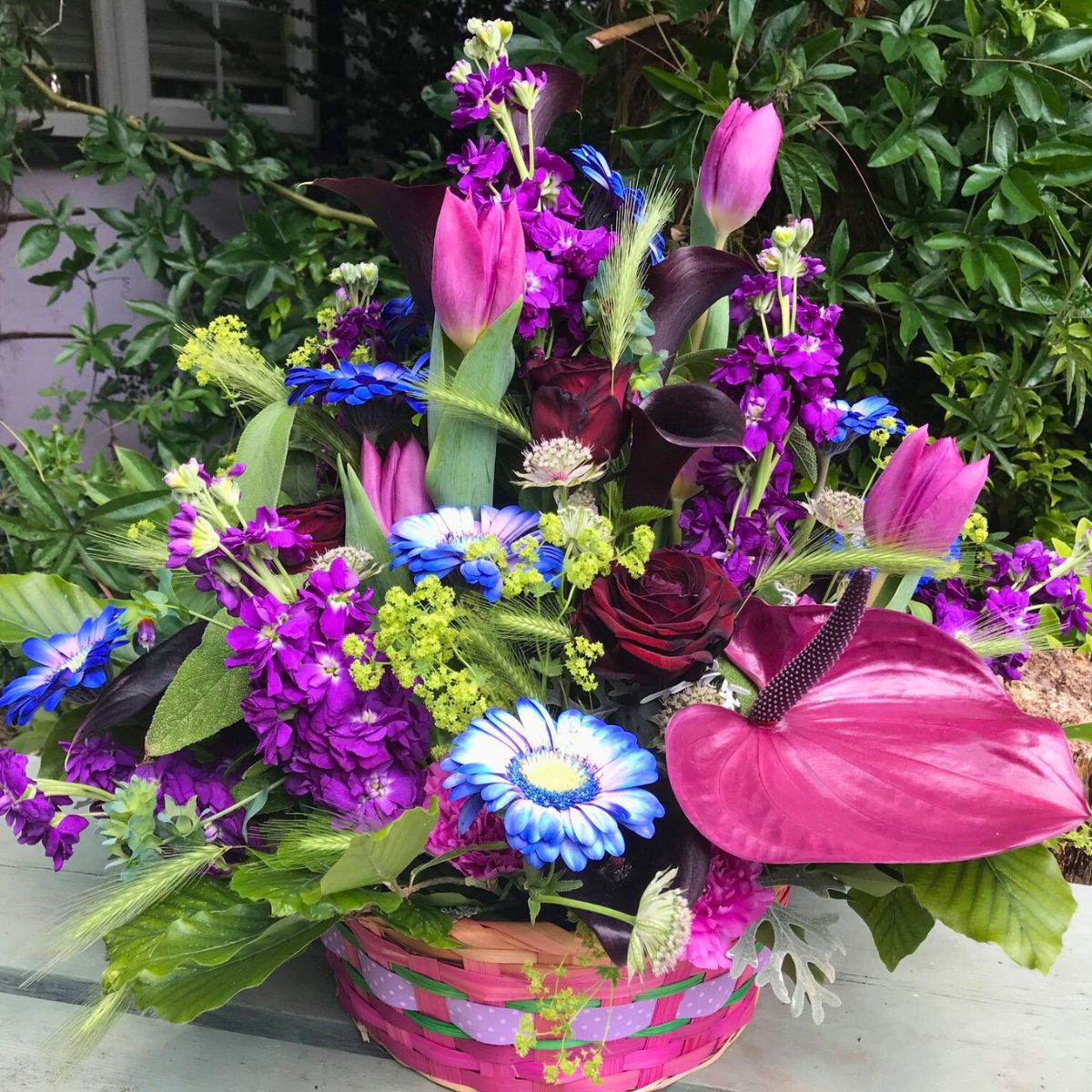
So now is the time to know how to dye flowers. Elevate your bouquets to a whole new level! Let's dive into the world of dyeing flowers and unleash your inner floral designer!
Step 1: Prepare Your Work Area
Spread a newspaper or plastic sheet over your work surface to protect it from spills and stains. Put on your rubber gloves to avoid staining your hands.
Step 2: Create the Dye Flowers Solution
Fill each container or vase with enough water to cover the bottom half of the flower stems. Add the desired amount of floral dye or food coloring to the water, following the manufacturer's instructions. The more dye you use, the more intense the color will be.
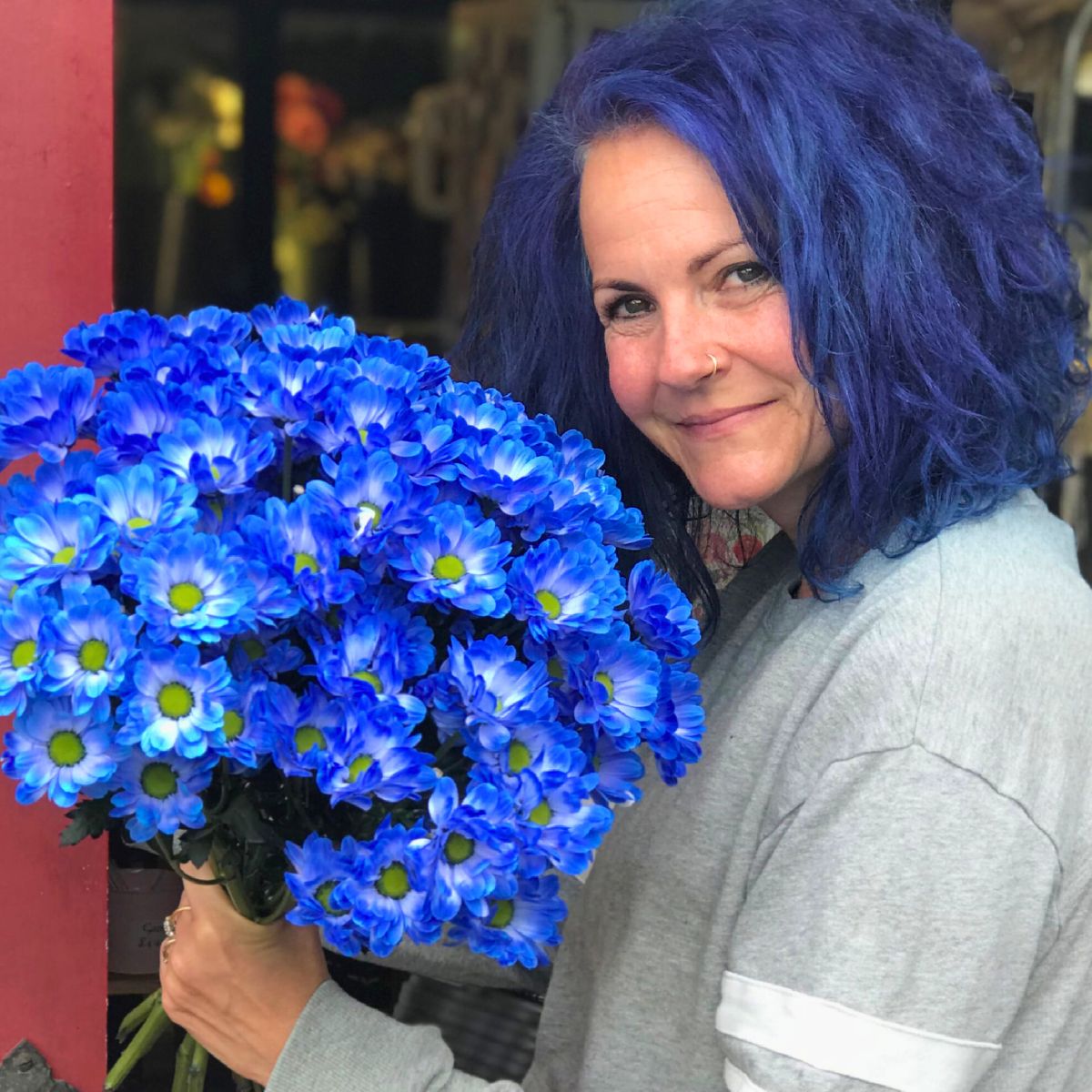
Step 3: Trim and Split the Flower Stems
Using sharp scissors or a knife, cut the flower stems at a 45-degree angle to help them absorb the dye better. For a more dramatic effect, you can also split the stem into several sections, which will create a multi-colored flower.
Step 4: Place the Flowers in the Dye Solution
Submerge the bottom half of the stems in the dye solution, ensuring they are fully immersed. Make sure the petals are not touching the liquid to avoid uneven coloration.
Step 5: Allow the Flowers to Absorb the Dye
Leave the flowers in the dye solution for several hours or overnight, depending on how deep you want the color to be. Check on them periodically to monitor their progress.
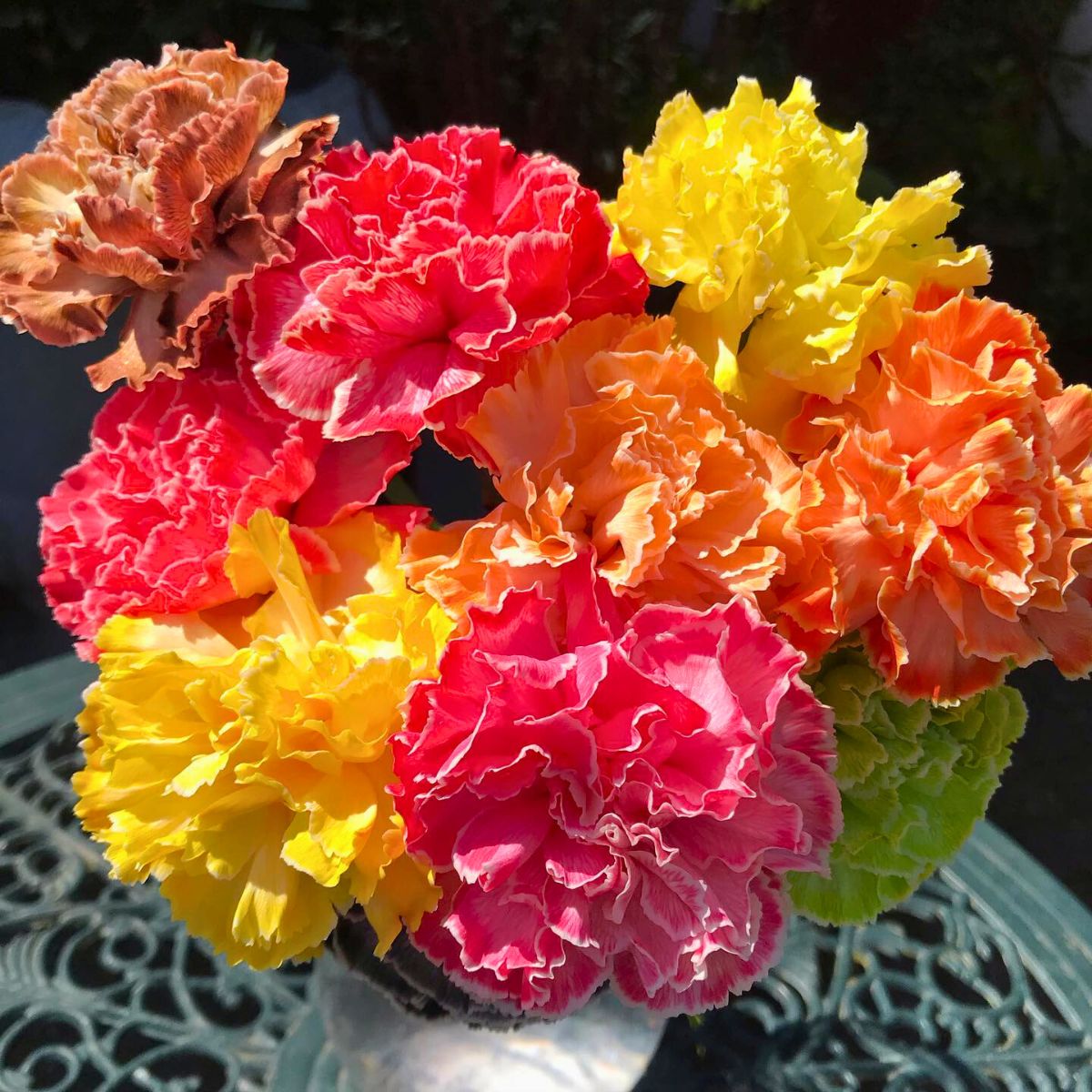
Step 6: Remove and Dry the Flowers
Once the flowers have reached your desired color intensity, carefully remove them from the dye solution. Gently shake off any excess liquid and place the flowers on a clean, dry surface, or hang them upside down to dry. Avoid direct sunlight, as this may cause the colors to fade.
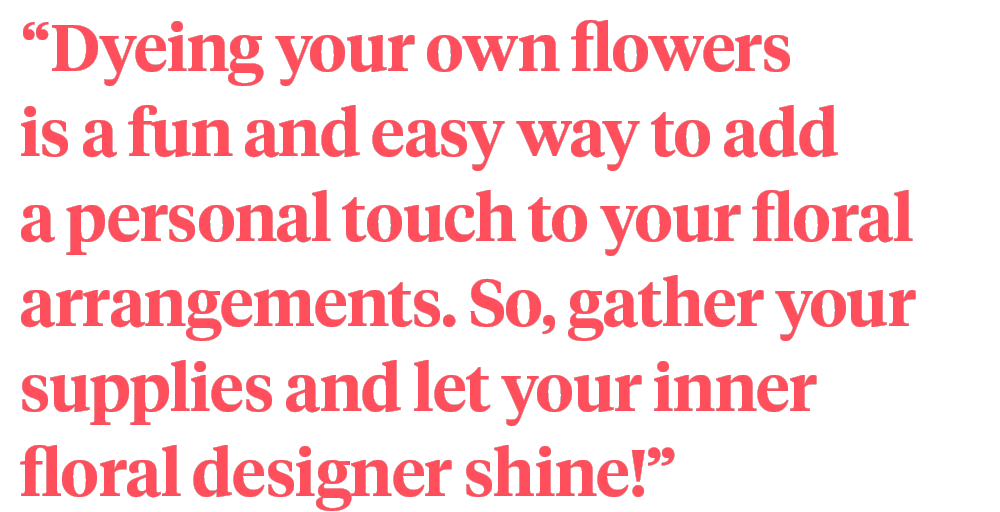
Step 7: Arrange Your Dyed Flowers
After the flowers are completely dry, you can arrange them into stunning bouquets, centerpieces, or displays. Combine your dyed flowers with other blooms or foliage to create eye-catching and personalized arrangements that showcase your creativity and style.
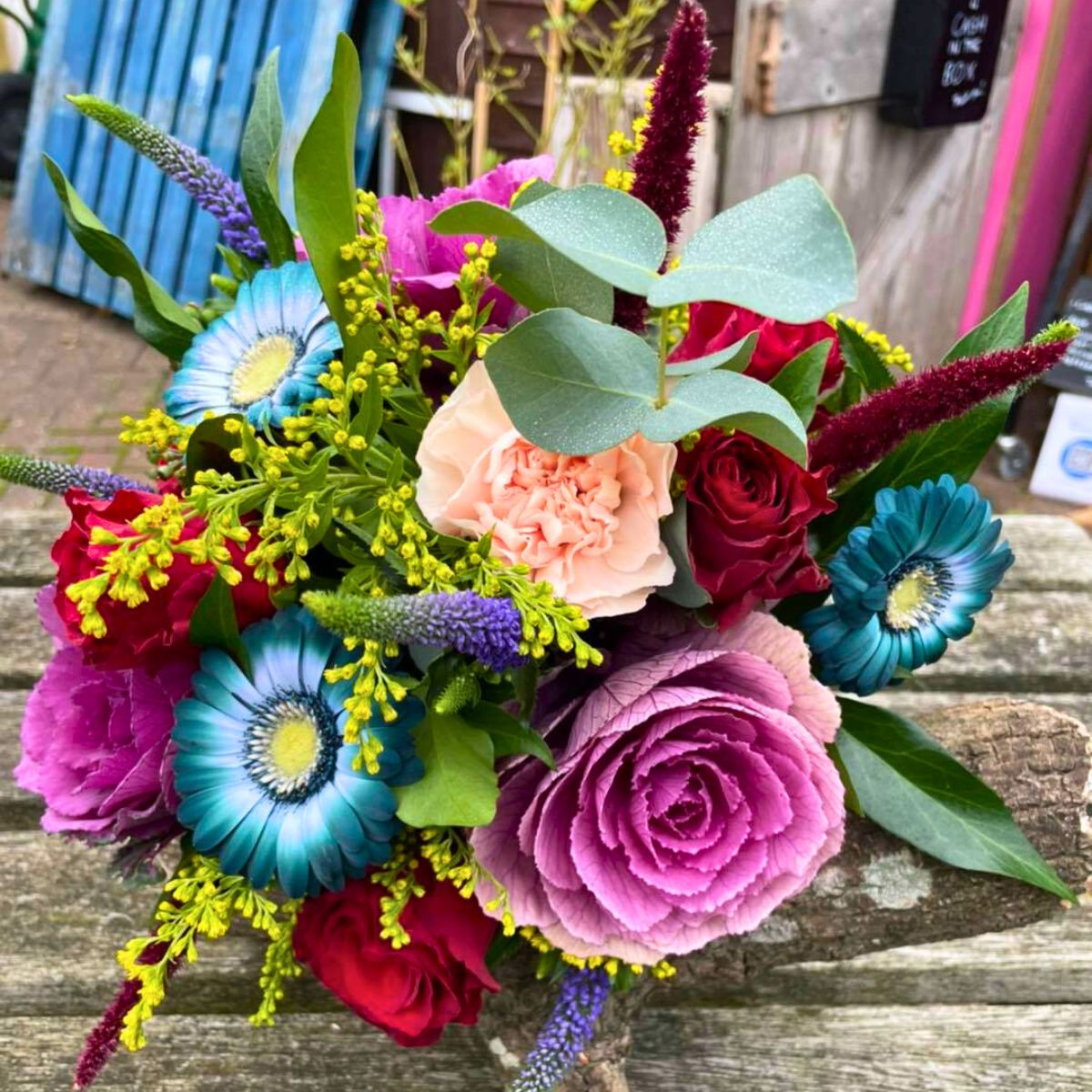
Preparation Time: The Materials You'll Need for Dyeing Flowers
The process of dyeing flowers starts with good preparation. So, let's get to it then. Discover the magic of customizing your floral arrangements with our simple step-by-step guide to dyeing flowers.
1. Fresh White or Light Flowers
Choose flowers with light-colored petals, plain white works for sure, for the best results.
2. Floral Dye or Food Coloring
Both liquid and powder dyes can be used, but ensure they are non-toxic and safe for use with flowers.
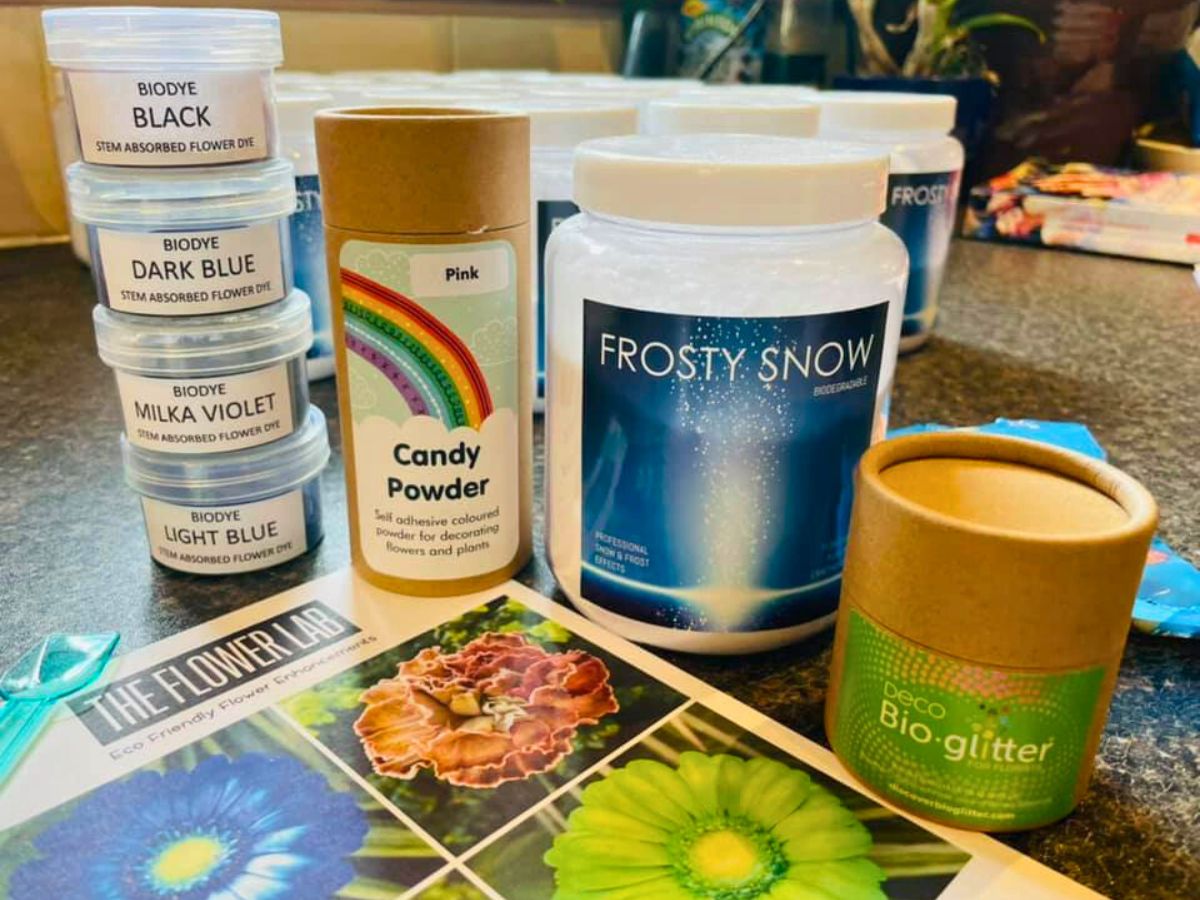
3. Water
Tap water is fine, but distilled water may provide more consistent results.
4. Small Containers or Vases
These will be used to hold the dye solution and flowers.
5. Rubber Gloves
To protect your hands from staining.
6. Newspaper or Plastic Sheet
For covering your work surface and protecting it from spills.
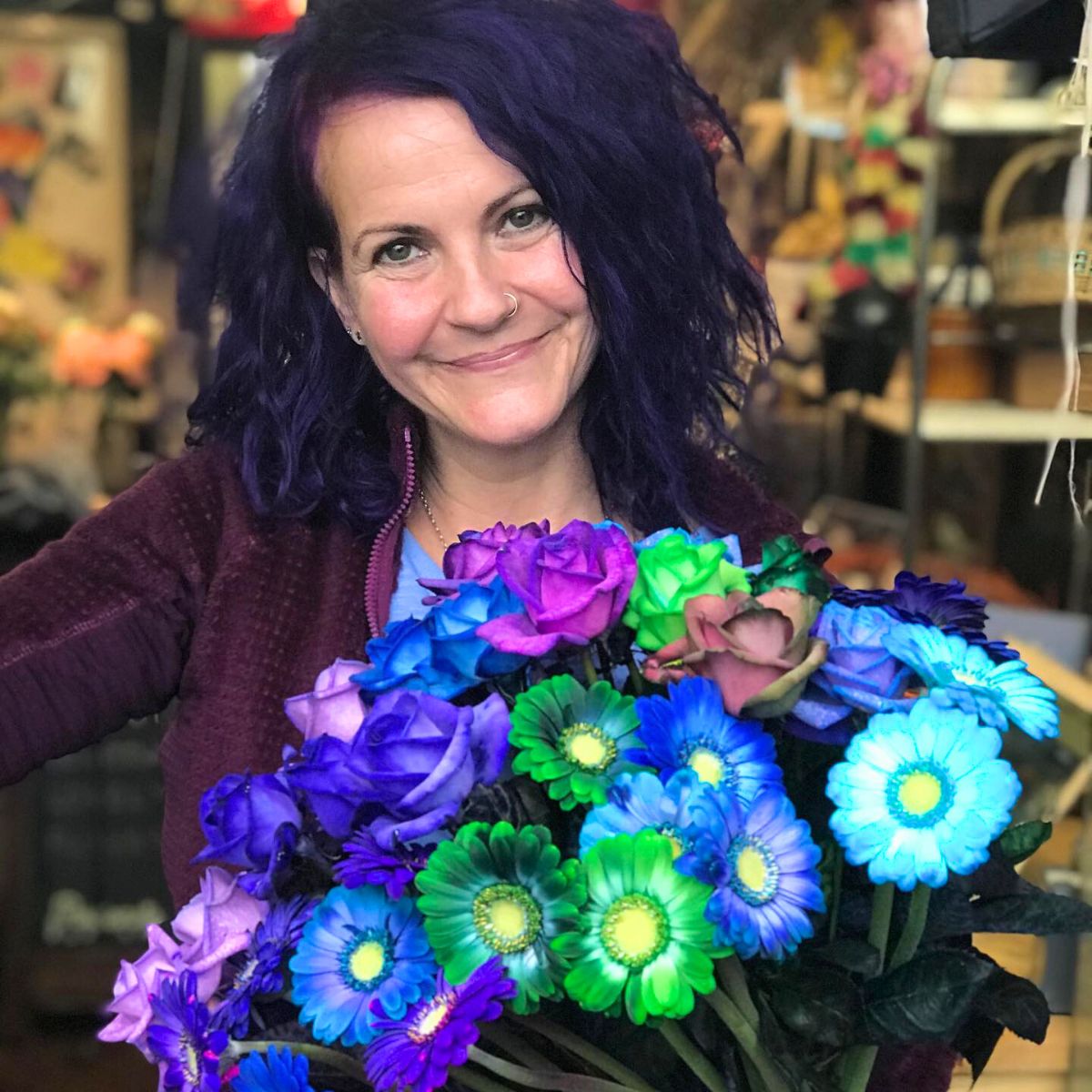
The Top 5 Flowers Perfect for Dyeing
Choosing the right flowers for dyeing is crucial to achieving the best results. Some flowers absorb dye better than others, and their structure or color can greatly impact the final outcome. Here are the five best flowers for dyeing and the reasons why they're ideal.
1. Carnations
Carnations are one of the best flowers for dyeing due to their ability to absorb dye evenly and quickly. Their tightly packed, ruffled petals create a beautiful canvas for showcasing vivid colors. Additionally, carnations have a long vase life, ensuring your dyed flowers will last and maintain their vibrant hues.
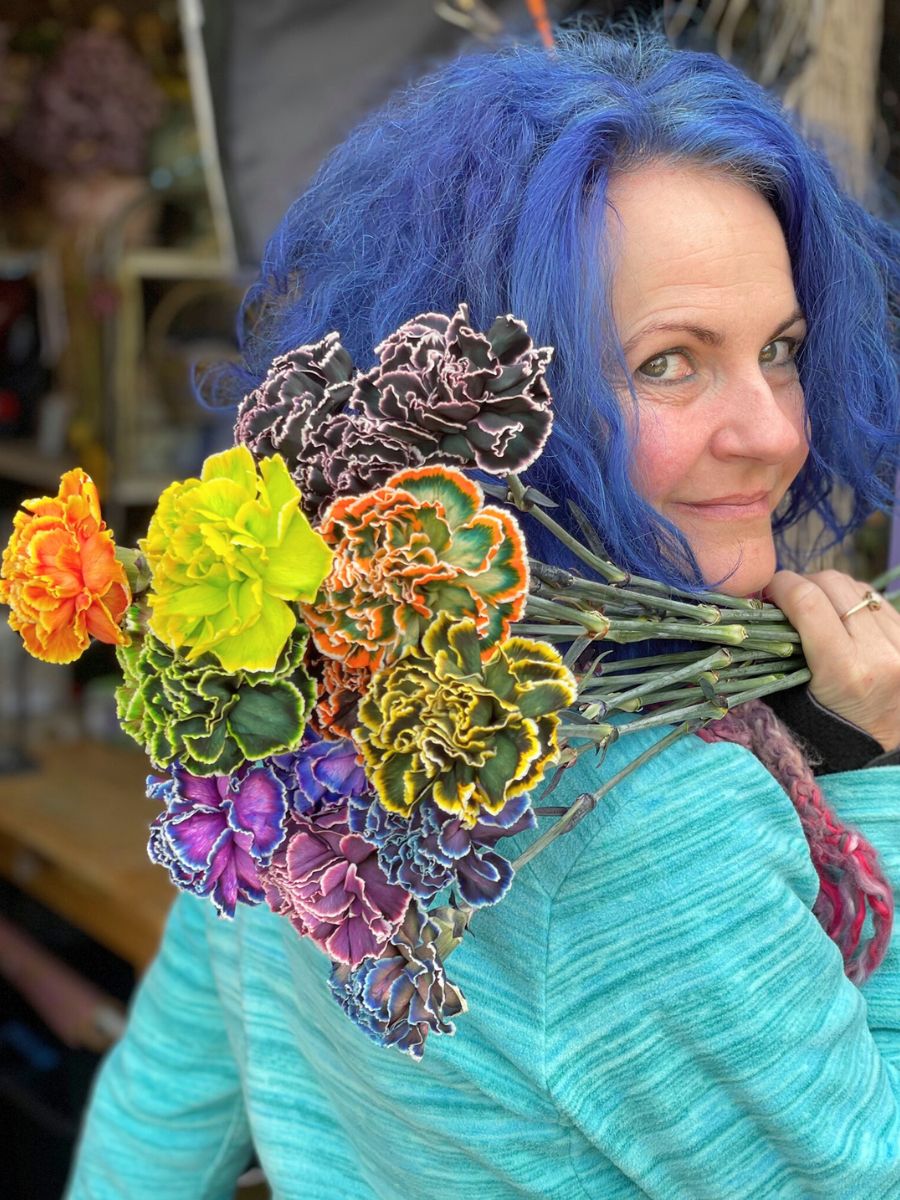
2. Hydrangeas
Hydrangeas are a popular choice for dyeing due to their large, showy blooms composed of numerous small flowers. These blooms can create a striking, multi-colored effect when dyed, as each individual flower can take on a slightly different shade. Hydrangeas are also naturally adept at changing colors, as their hue can be influenced by the acidity of the soil, making them a suitable candidate for dyeing.
3. Roses
Roses are another excellent choice for dyeing because of their large, flat petals, which provide a great surface area for even color distribution. White or light-colored roses are the most suitable for dyeing, as they allow for a wide range of color possibilities. Roses are also a classic and popular choice for various occasions, making them a versatile option for dyed arrangements.
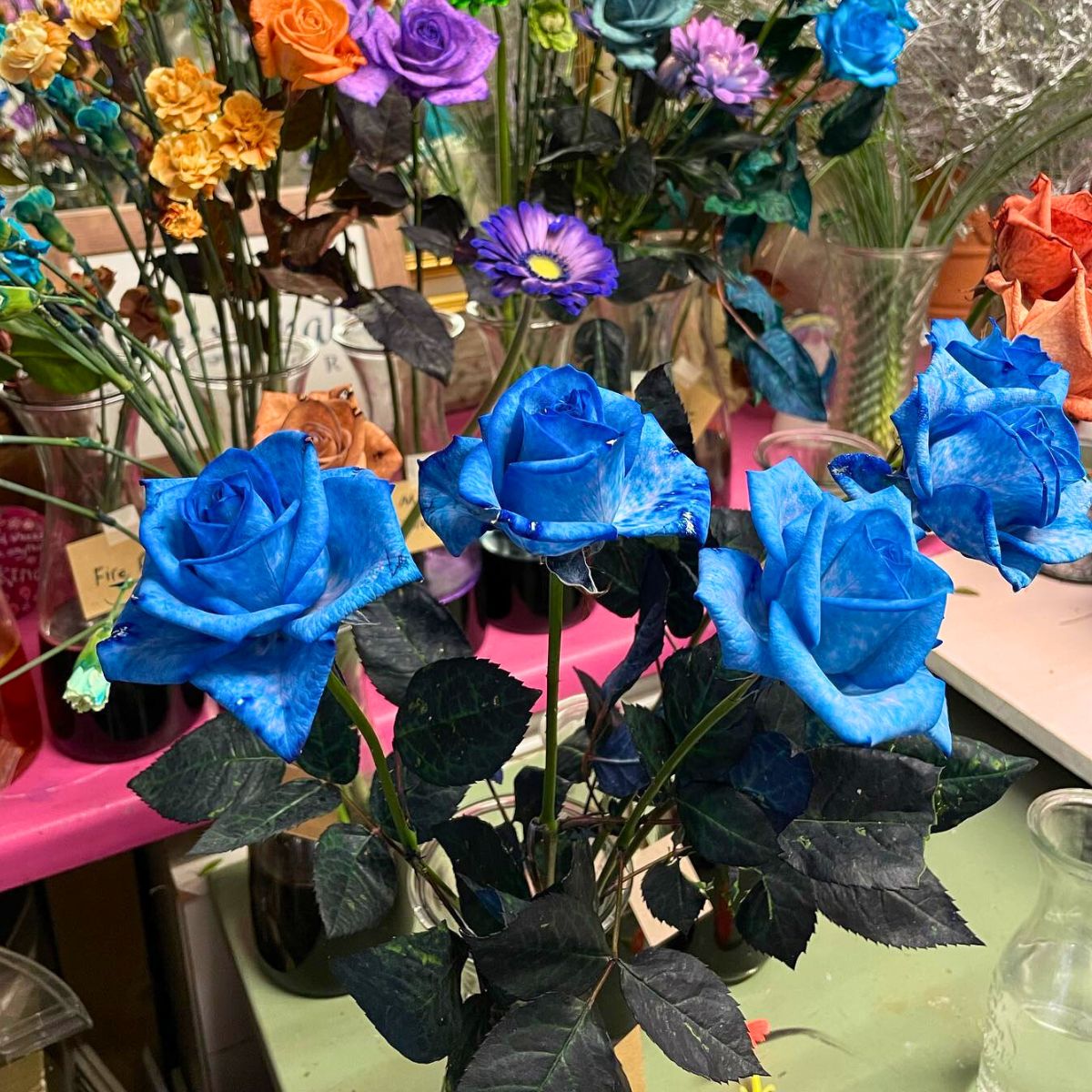
4. Daisies
Daisies are perfect for floral dyeing due to their simple, open structure, which allows the dye to penetrate easily and produce a uniform color. Their naturally white or light-colored petals make them an ideal base for a variety of shades. Dyed daisies can add a playful, whimsical touch to any floral arrangement.
5. Chrysanthemums
Chrysanthemums, also known as mums, are great for dyeing flowers because their dense, layered petals can create a stunning visual effect when dyed. These flowers are available in various sizes and petal arrangements, offering endless possibilities for customization.
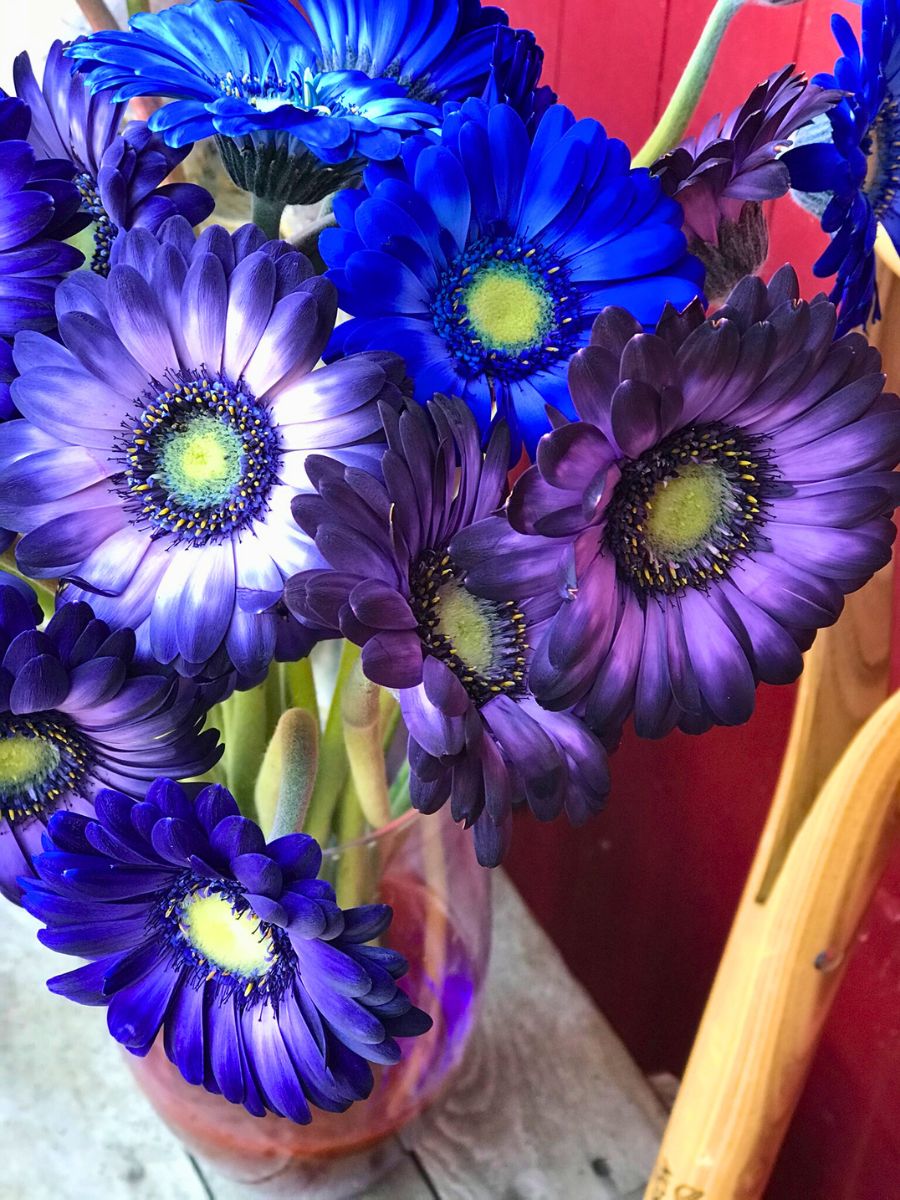
Moreover, chrysanthemums have a long vase life, ensuring your dyed creations will stay fresh and vibrant for an extended period of time.
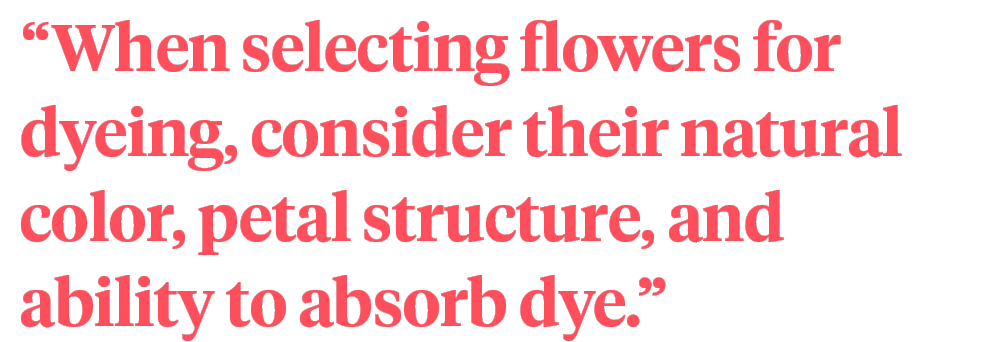
When selecting flowers for dyeing, consider their natural color, petal structure, and ability to absorb dye. The above flowers have proven to be excellent choices for dyeing, but don't be afraid to experiment with other blooms as well. The possibilities are endless!
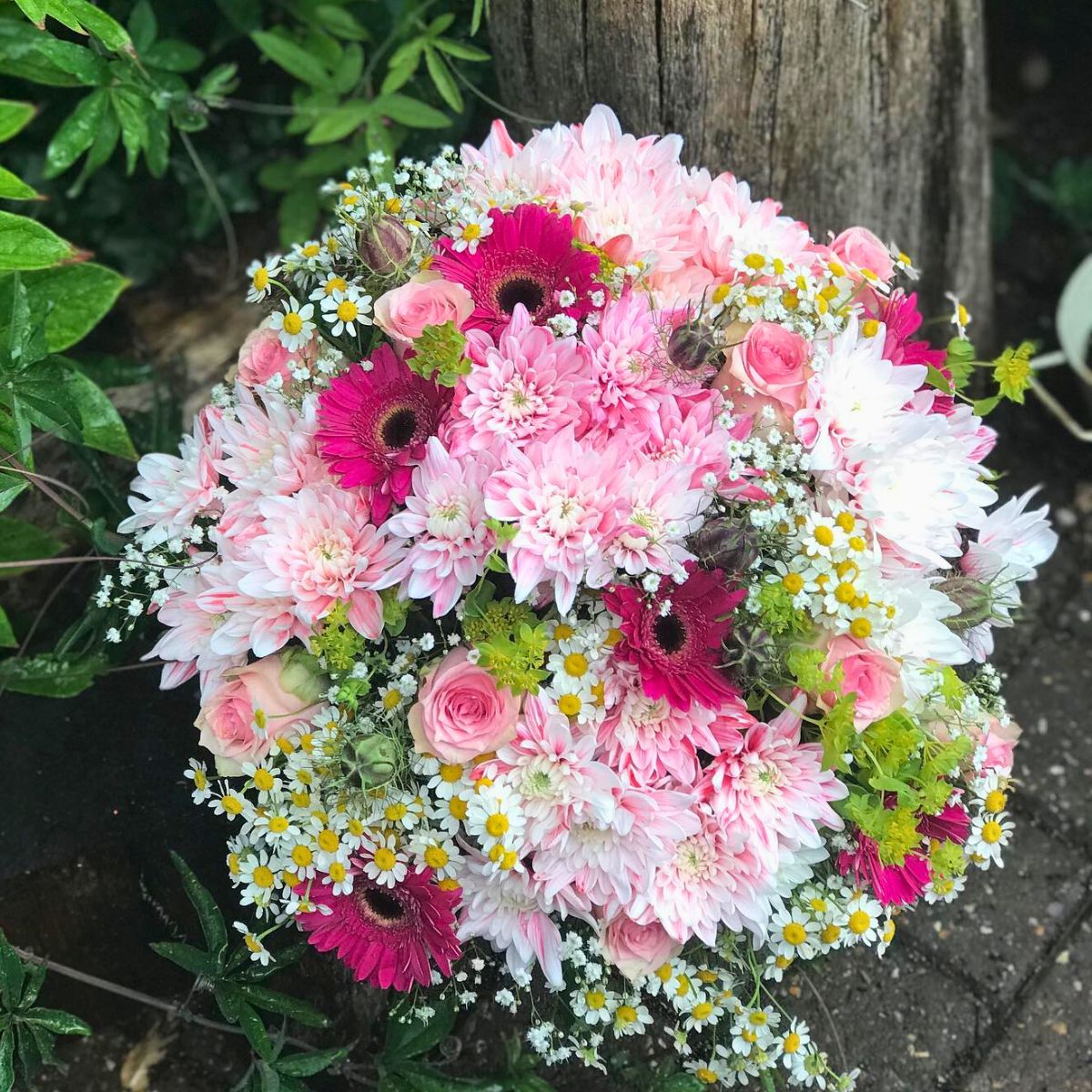
Tips and Tricks for Beautiful Dyed Flowers
Here are some additional tips from pros to help you achieve the best results when dyeing your flowers:
1. Use Fresh Flowers
Fresh flowers will absorb the dye more efficiently, resulting in more vibrant and even coloration. Avoid using flowers that are wilted or have brown edges, as they may not take the dye well.
2. Experiment With Different Dyeing Techniques
Try different methods like dip-dyeing, spray-dyeing, or even painting the petals with a small brush to achieve various effects and patterns.
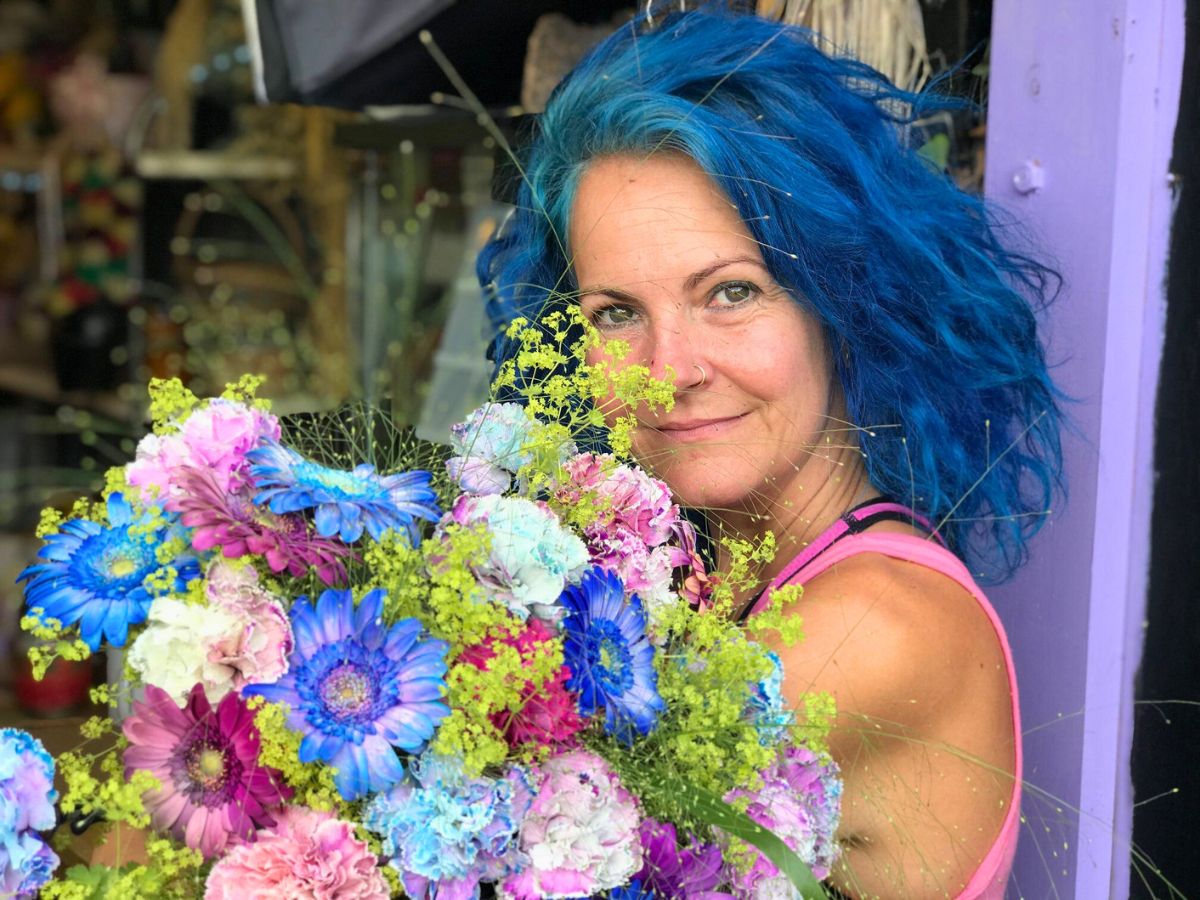
3. Mix Colors for Unique Shades
Create your own custom colors by mixing different shades of dye or food coloring. This will allow you to achieve the perfect hue to match your theme or décor.
4. Test the Dye Solution on a Spare Flower
Before dyeing your entire batch of flowers, test the dye solution on a single flower to ensure the color is what you're aiming for. This will help you avoid any disappointment and make any necessary adjustments to the dye concentration.
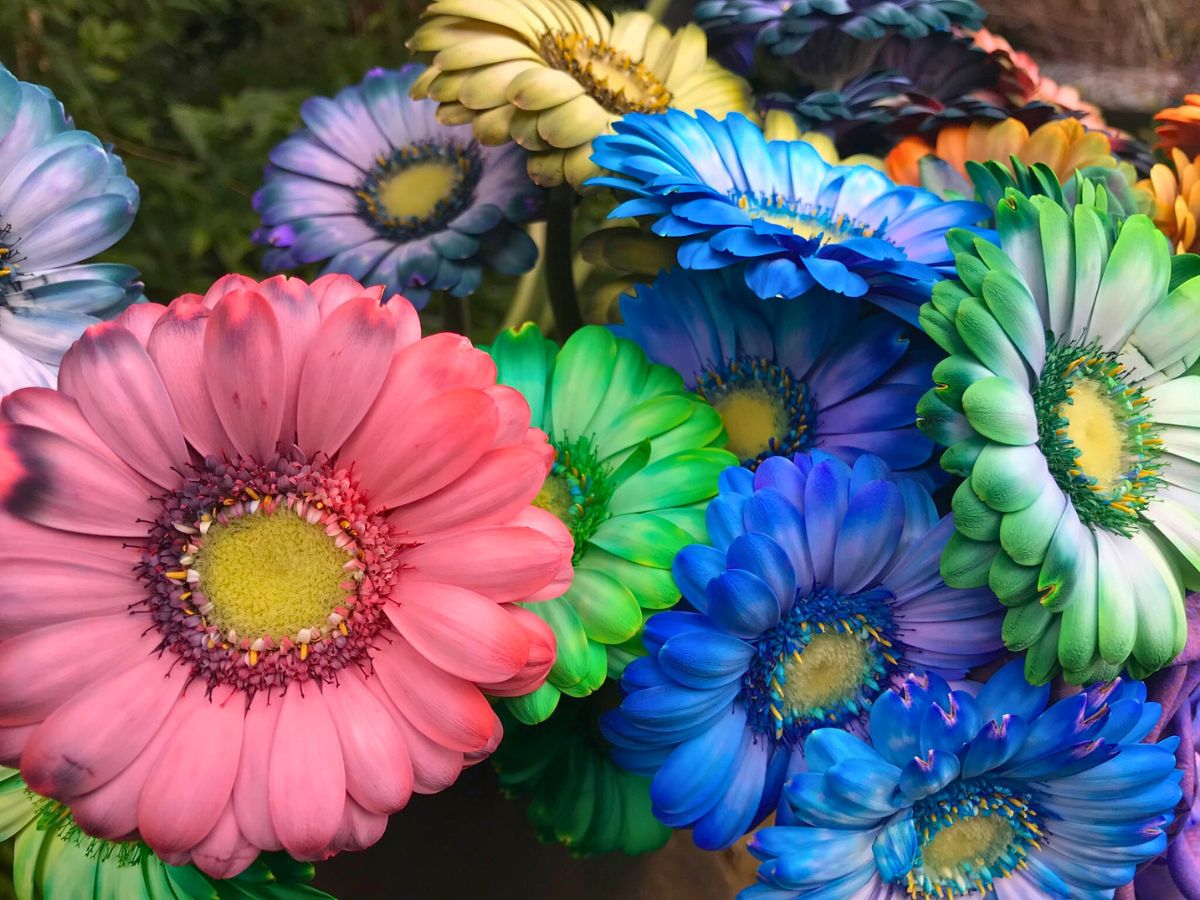
Why Should You Choose to Dye Flowers?
Regardless of age or experience, dyeing flowers can be a fun and engaging activity that brings out the inner artist in everyone. From florists who create stunning arrangements to consumers looking for a unique DIY project, dyeing flowers offers a world of possibilities. And there are so many legit reasons why dyeing flowers is such a delightful experience for all.
Unleash Your Creativity
One of the most appealing aspects of dyeing flowers is the opportunity to unleash your creativity. The process allows you to play with color combinations, experiment with different techniques, and create unique, personalized arrangements. The ability to transform ordinary flowers into vibrant, customized works of art is an exhilarating experience that never grows old, whether you're a seasoned florist or a first-time DIY enthusiast.
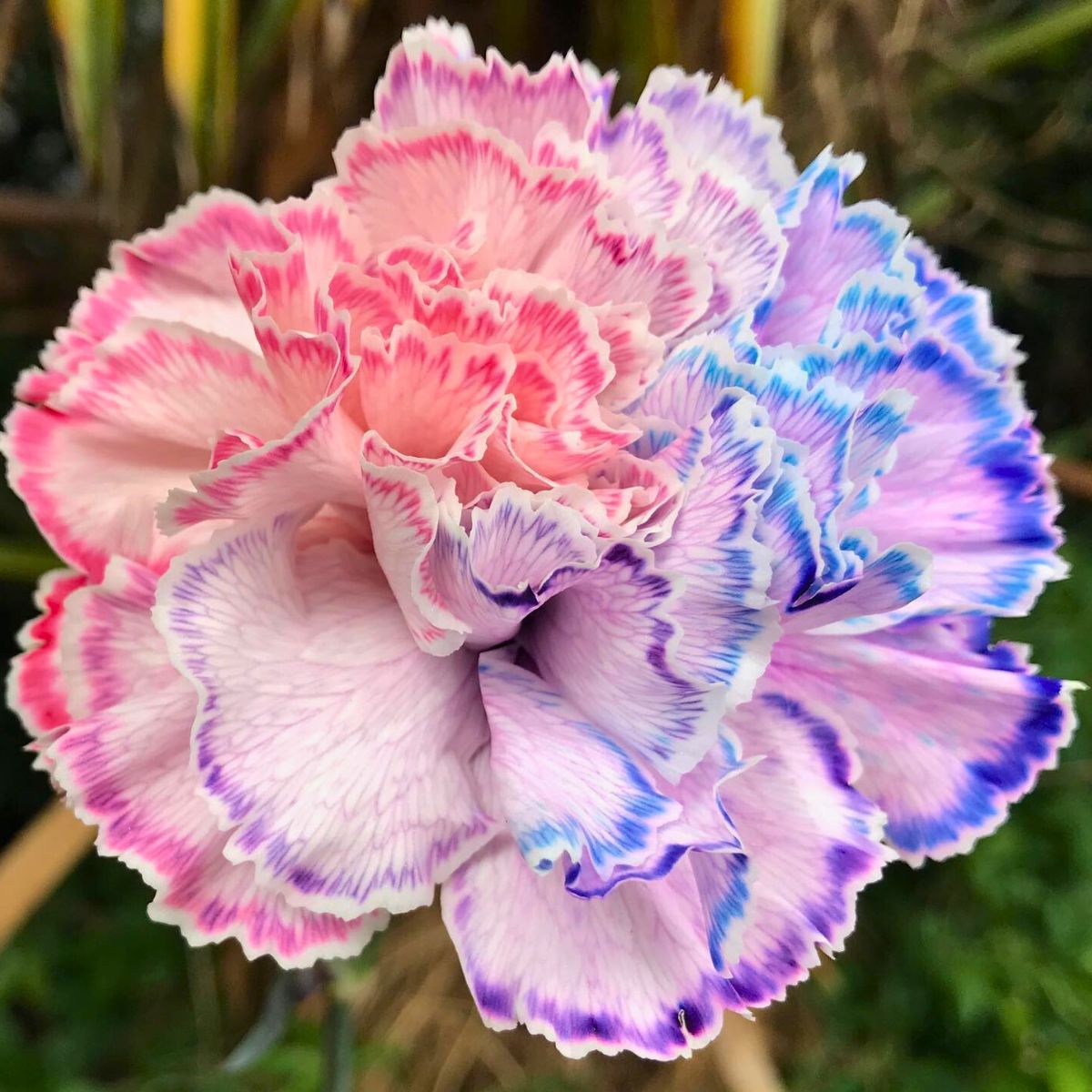
A Therapeutic Experience
Dyeing flowers can be a relaxing and meditative activity. The process of immersing oneself in color and working with beautiful blooms can help alleviate stress and provide a sense of calm. Whether you're a busy florist looking for a moment of zen or a consumer seeking a new hobby, dyeing flowers offers a therapeutic escape from the hustle and bustle of everyday life.
A Gateway to Learning and Experimentation
Dyeing flowers is an excellent opportunity to learn about the science behind color absorption and the biology of plants. For young and old alike, this hands-on experience can spark curiosity and foster a deeper understanding of the natural world. Moreover, experimenting with different flowers, dyes, and techniques can lead to new discoveries and inspire innovation in floral design.
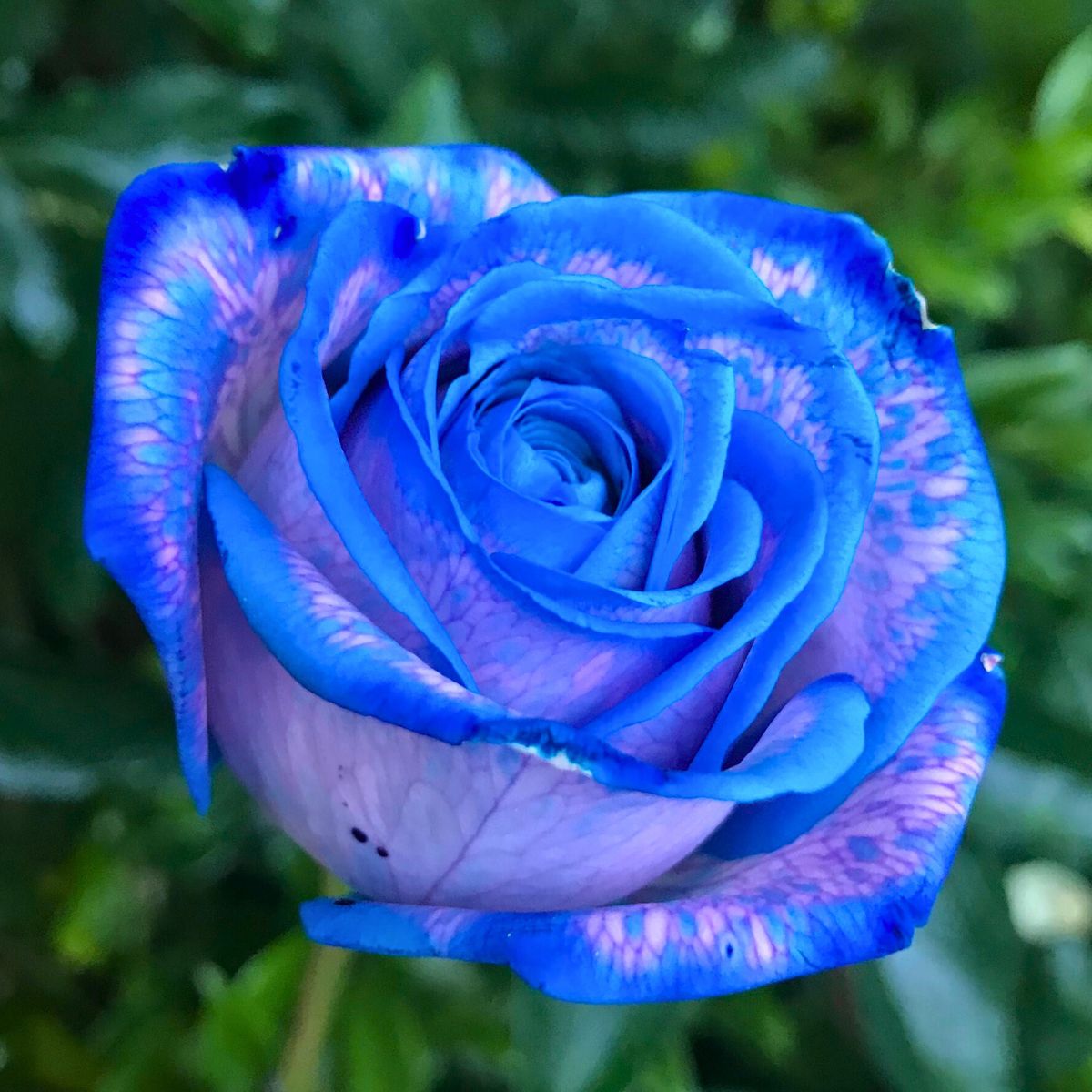
Connecting With Nature
Floral dye allows you to connect with nature on a more intimate level. As you work with the flowers, you gain a deeper appreciation for their beauty, intricacies, and resilience. This connection can lead to a greater sense of environmental awareness and responsibility, as you come to understand the vital role that flowers and plants play in our ecosystem.
An Activity for All Ages
From children to seniors, dyeing flowers is an enjoyable activity that transcends age barriers. With its simplicity and accessibility, dyeing flowers can be a fantastic way for families and friends to bond and create lasting memories.
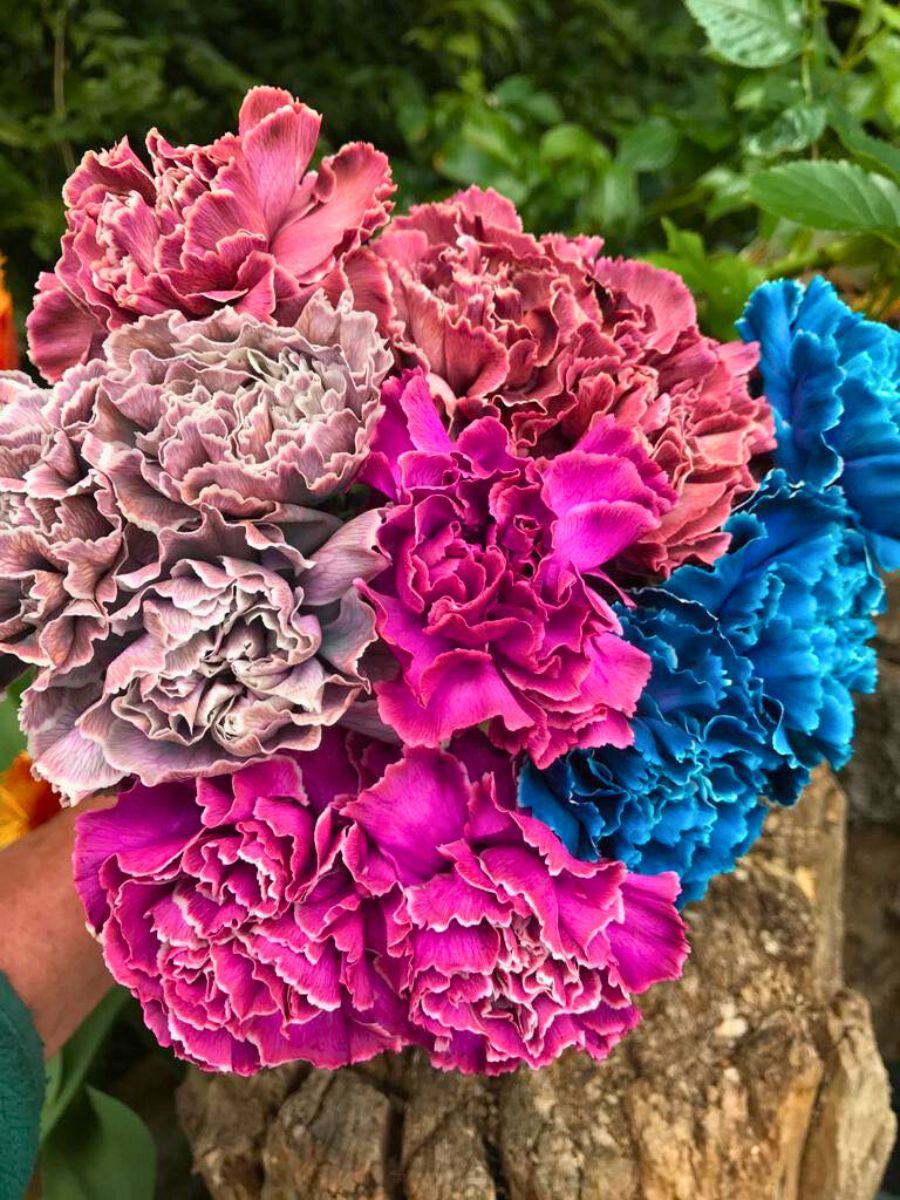
The final result – a beautiful, custom-colored bouquet – serves as a tangible reminder of the fun and creativity shared during the process.
A Personal Touch for Special Occasions
Consumers often seek unique and personal touches for special occasions, such as weddings, anniversaries, or parties. Dyeing flowers allows them to create bespoke floral arrangements that match their color scheme, theme, or personal style. This customization not only adds a unique flair to any event but also imbues it with a deeper sense of meaning and individuality.
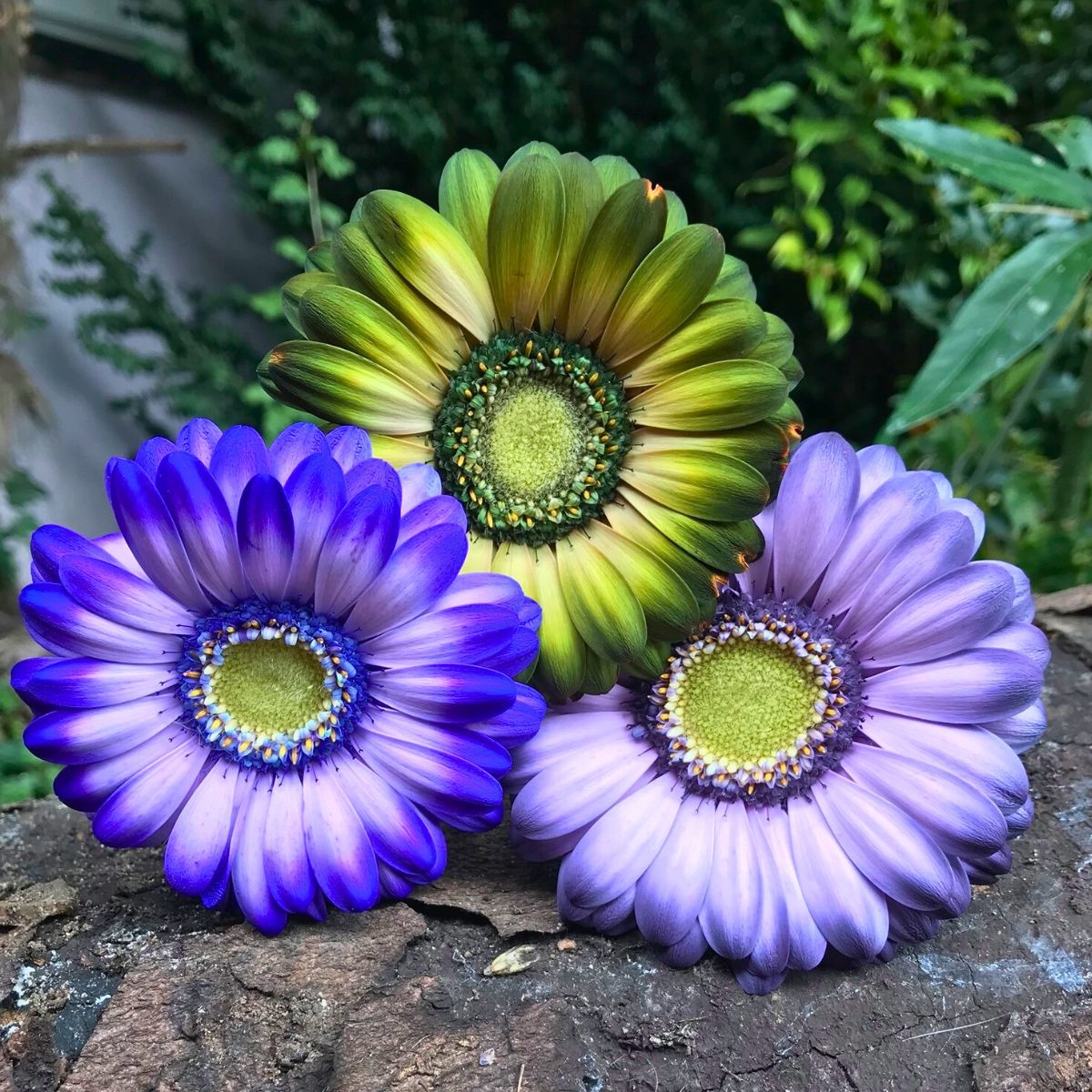
Dyeing your own flowers is a fun and easy way to add a personal touch to your floral arrangements. With some creativity and a little bit of practice, you can transform ordinary blooms into extraordinary, custom-colored masterpieces. So, gather your supplies and let your inner floral designer shine!
All images by The Flower Lab. Be sure to visit The Flower Lab by dyeing wizardess Kat Bass.

